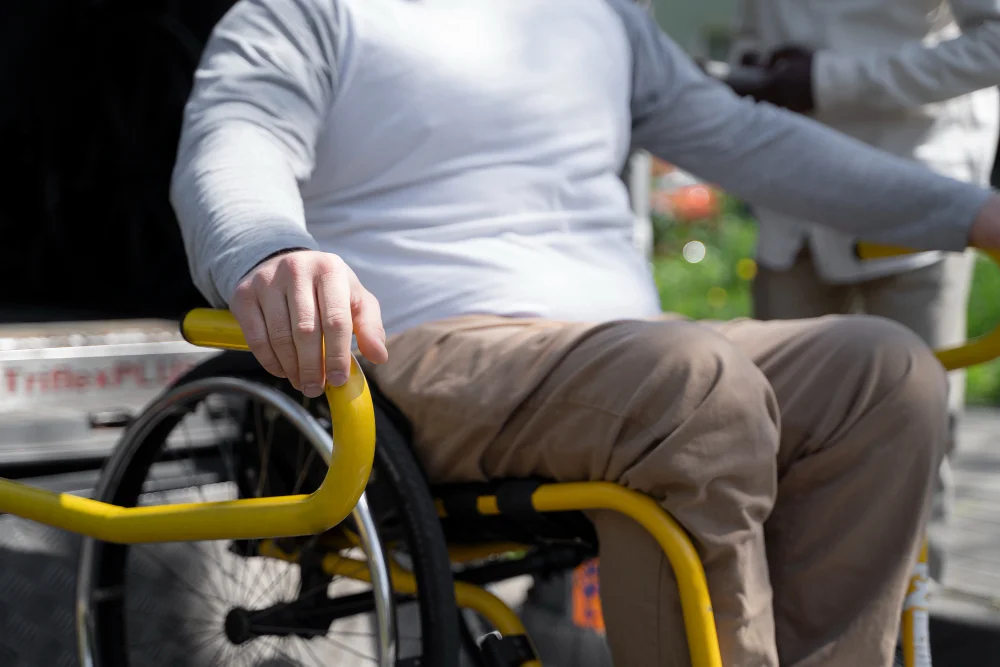The ageing process is an inevitable journey that often brings with it a decline in mobility. As mobility decreases, the likelihood of accidents and injuries within the home environment increases. This underscores the significance of equipping homes with essential tools to ensure safe mobility for seniors. One such pivotal category of tools is mobility aids, which can dramatically transform the living spaces of older adults into safer, more navigable environments.
Understanding the Importance of Mobility Aids
Mobility aids are devices designed to help people who have problems moving around enjoy greater freedom and independence. They come in various forms, from simple canes and walkers to more complex wheelchairs and stairlifts. As individuals advance in years, the installation and use of these aids in a home environment can be a game-changer.
Falls are one of the greatest risks faced by seniors, with considerable health consequences. Mobility aids can significantly reduce this risk by providing the support and stability that ageing bodies require. They also ensure that seniors can carry out their daily activities with minimal strain, thereby preserving their health and well-being.
Categories of Mobility Aids
There is a broad spectrum of mobility aids tailored to meet different needs and preferences. Adjustable beds, recliner chairs, and bath aids improve comfort and safety in resting and hygiene routines. Walking aids like canes and rollators support movement around the house and beyond, while grab rails installed throughout the home can prevent dangerous slips and falls.
For those with more severe mobility issues, wheelchairs and electric scooters provide the means to move freely and with confidence. They open up opportunities for social engagement and outdoor activities, which are crucial for mental health and quality of life. Moreover, lifts and ramps can make multilevel homes or entry steps more accessible.
The Benefits of Compression Socks for Seniors
Beyond structural mobility aids, separate tools enhance comfort and mobility. For example, compression socks are a simple yet effective tool for seniors experiencing circulatory problems. These specially designed socks apply gentle pressure to the legs and ankles, promoting blood flow and reducing swelling and the risk of blood clots. This is especially beneficial for seniors who are immobile for extended periods.
Compression socks also soothe tired, aching legs, which can be a frequent complaint as one grows older. They enable seniors to maintain a more active lifestyle while safeguarding their circulatory health. Their ease of use and discrete nature make them a practical solution for everyday wear.
Pairing Mobility Aids with Everyday Safety Measures
Mobility aids are one part of a much larger picture when it comes to ensuring the safety and health of seniors. Equipping homes with safety features should also include an emphasis on everyday first aid supplies to address minor injuries promptly. This assists in preventing complications that could arise from cuts, grazes, or more serious injuries that might occur despite preventive measures.
An everyday first aid kit should be easily accessible and well-stocked with items like plasters, antiseptic wipes, dressings, and bandages. Simple educational efforts on how to use these supplies can empower seniors to manage minor wounds effectively until professional medical care can be obtained when necessary.
Adapting Homes for Safe Senior Living
It’s vital to consider the layout and design of a senior’s living environment. Furniture should be arranged to provide clear walkways, and adequate lighting is essential to prevent falls during low-light conditions. Non-slip mats and removal of loose rugs can further reduce slipping hazards. Routine checks and maintenance of mobility aids ensure their efficacy and safety.
In terms of home renovations, thresholds can be lowered or eliminated to ease transit between rooms, and bathrooms can be modified with walk-in tubs or barrier-free showers to lower the risk of slips in wet areas. Lever-style door handles and touch-operated taps may also be more beneficial for those with limited hand strength or arthritis.
Conclusion
The inclusion of mobility aids in the home is essential not only for the physical support they provide but also for the psychological benefits. Understanding that one’s home is equipped to deal with mobility challenges can alleviate the fear of falls and injuries, thus enhancing the sense of security and independence among seniors.
As our population ages, it’s important to emphasise how small changes, like adding mobility aids, can make a large impact on the quality of life for the elderly. These aids, along with measures such as wearing compression socks and maintaining an everyday first aid kit, demonstrate a commitment to senior safety and autonomy. Such preparedness is key to ensuring that seniors can live with dignity and comfort in their beloved homes.
Ultimately, we should all be proponents for safe mobility among seniors. This begins in their homes, where the right support can lead to healthier, happier, and more connected lives. By prioritising these areas, we foster an environment that is not only safe for seniors but one that actively contributes to their overall wellness.









